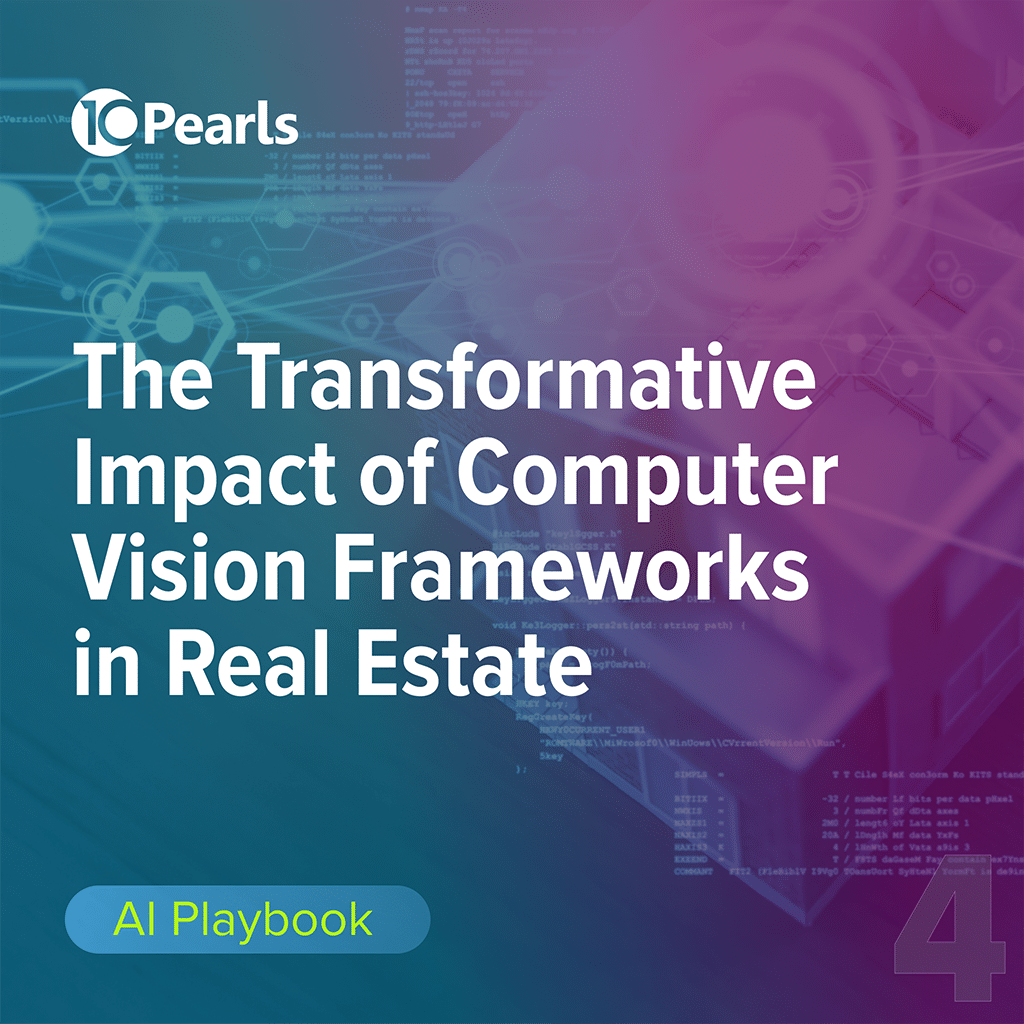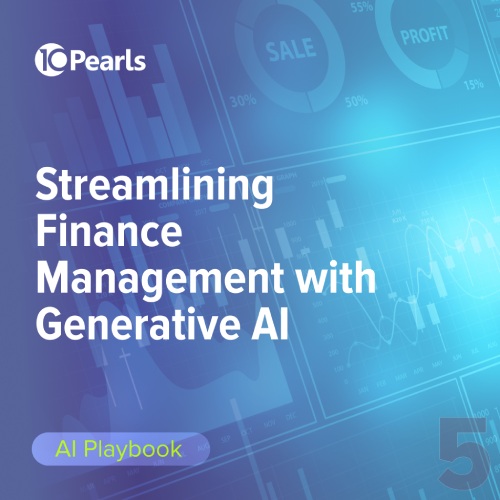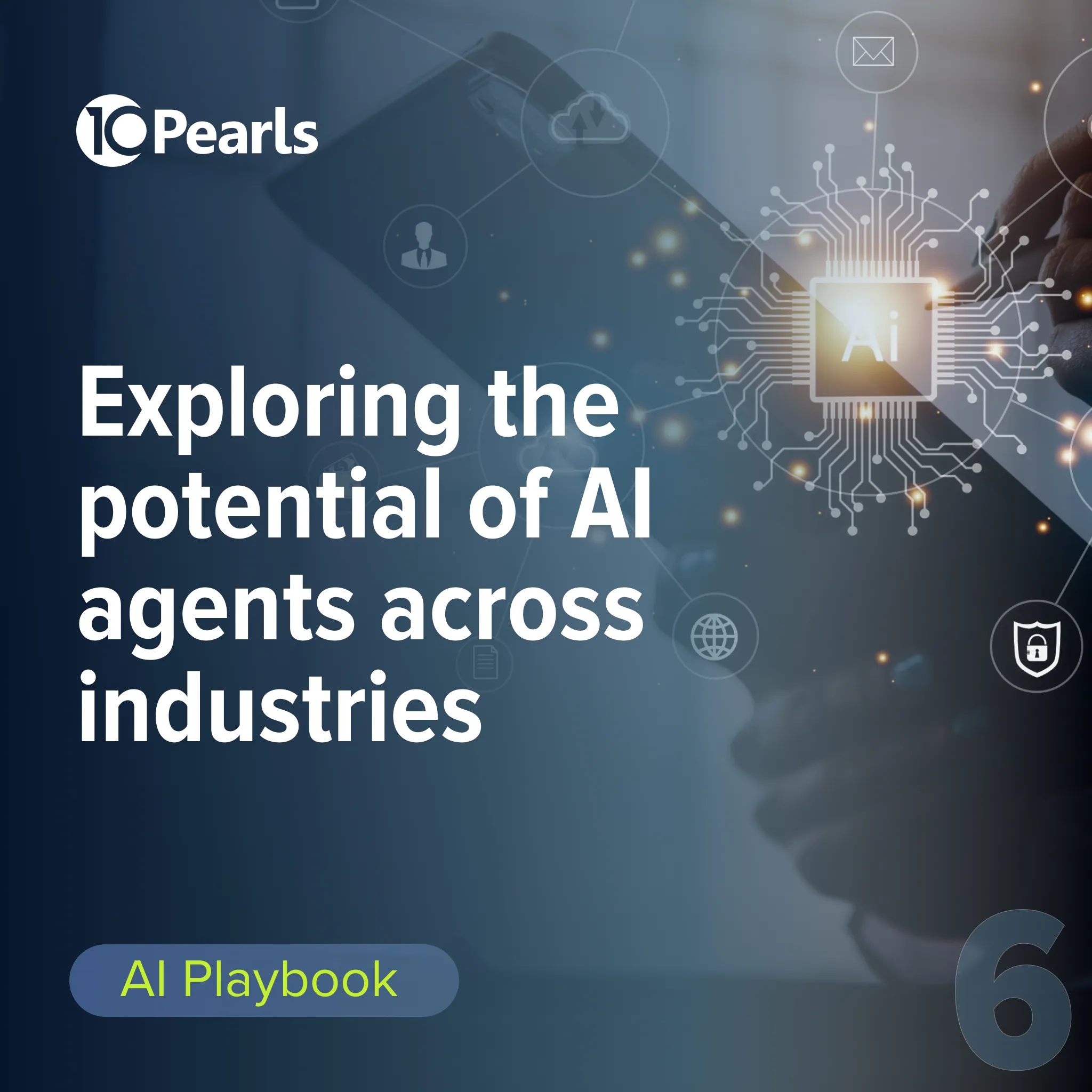How To Future-Proof Your Product With AI
By 10Pearls editorial team
A global team of technologists, strategists, and creatives dedicated to delivering the forefront of innovation. Stay informed with our latest updates and trends in advanced technology, healthcare, fintech, and beyond. Discover insightful perspectives that shape the future of industries worldwide.
In a fast-moving marketplace, simply meeting your customers current needs isn’t enough to stay competitive. Companies must ensure their products can evolve to meet future demands, adapt to market fluctuations, and take advantage of new technological innovations. Adding artificial intelligence (AI) features to a software application is a popular way to enhance its capabilities and make it appear more futuristic to end users. An even better strategy is to incorporate AI into every stage of the product lifecycle to truly future-proof the application.
This blog explains seven strategic ways that innovative companies can future-proof their product with AI – plus some of the major pitfalls to overcome and advice for streamlining implementation.

- 7 ways to future-proof your product with AI
- Improving stakeholder engagement
- Building flexible product roadmaps
- Enabling product differentiation strategies
- Fostering cross-team collaboration
- Modernizing legacy products
- Generating robust documentation
- Optimizing costs
7 ways to future-proof your product with AI
You’re probably already familiar with some of the common ways that companies are augmenting their software’s capabilities with AI, such as intelligent automation and predictive analytics. However, truly innovative organizations are integrating AI into the entire product lifecycle to future-proof their product strategy. Here’s what it’s helping them accomplish:
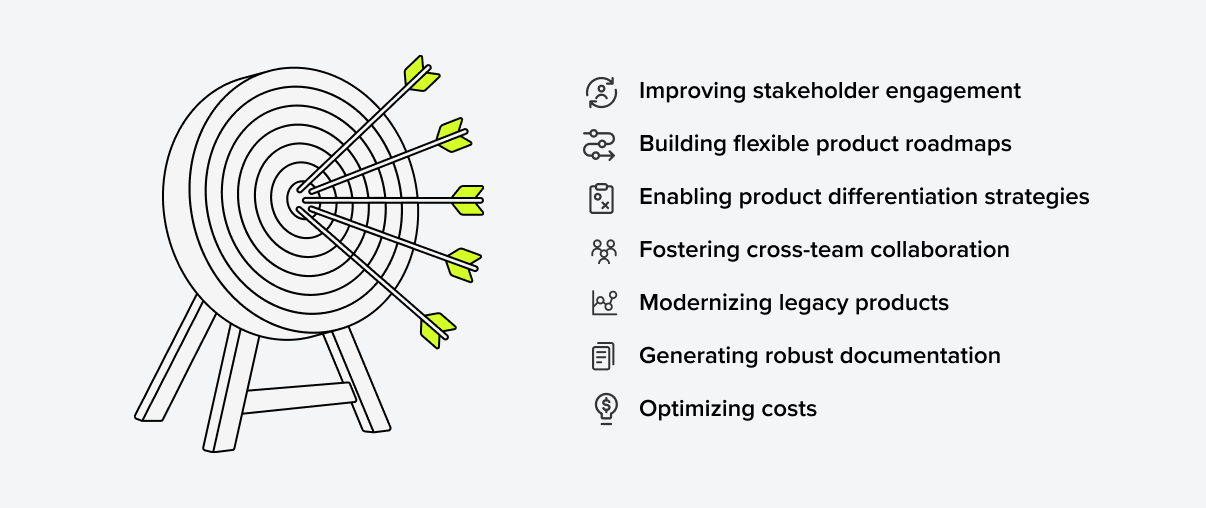
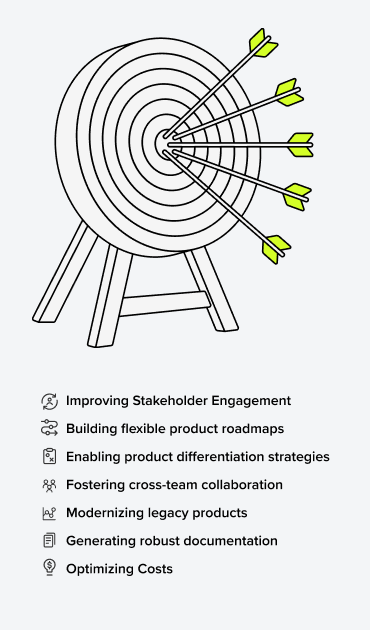
1. Improving stakeholder engagement
Stakeholder buy-in is crucial at every stage of product design, development, and support, but keeping the business aligned with technical teams can be challenging. AI can help pull meaningful insights from technical data and craft high-level reports that prove the business value of every feature. Keeping business stakeholders aligned with the technical side of the house will ensure that designers and developers have the support they need to innovate and expand your product with new ideas.
2. Building flexible product roadmaps
A product roadmap provides the reference point for teams to ensure that every feature they develop aligns with both the long-term business goals and the immediate customers needs. The roadmap can and should change to adapt to market fluctuations, customer feedback, and shifting business priorities. AI can help product teams create and update product roadmaps based on enhanced insights from product data and market feedback. It allows companies to more easily pivot to meet the needs of their user base while keeping product teams focused and aligned.
3. Enabling product differentiation strategies
Differentiating your product from others on the market is crucial for success, but with so many competing products, it can be nearly impossible to find ways to stand out. AI can analyze the market to identify potential differentiation opportunities. AI insights can help enable focus strategies that target a specific niche market that’s underserved by existing products, giving companies a significant competitive advantage.
4. Fostering cross-team collaboration
There are many different cross-functional teams that play key roles in product development and support, and they each have their own priorities and challenges. AI can help identify and summarize the key information each team needs to complete their tasks within the broader workflow, reducing friction and hand-off delays.
It can, for example, provide executive summaries with key takeaways to help non-technical stakeholders understand the impact of a change, or analyze a customer service interaction to highlight the action items for developers to fix a specific problem. Better cross-team collaboration will result in a high-quality product that can quickly adapt to future changes.
5. Modernizing legacy products
AI can also help bring legacy products up to modern standards and ensure they’re able to be iterated and improved in the future. AI can analyze existing systems to identify where and how they can be improved, automatically refactor code from monolithic structures into microservices, and help transition from outdated databases to modern systems. These changes provide a cost-effective solution to future-proofing existing products as opposed to developing something entirely new from the ground up.
6. Generating robust documentation
Good documentation is the key to ensuring future teams have all the context they need to fix, update, or improve the product. AI can help create robust documentation about technical features so future developers know exactly where and how to make code changes. It can also generate guides for both internal and external users to help reduce knowledge gaps and provide enhanced customer service. AI reduces the documentation workload on busy product teams while ensuring success for future users.
7. Optimizing costs
Reducing development and operational costs is crucial for improving a product’s ROI. AI can help analyze a product’s various cost drivers and provide recommendations for cutting unnecessary expenses. For example, AI can review cloud deployments and identify unused resources that can be shut down to reduce the monthly infrastructure bill. AI can also help reduce development costs by automating tasks like code reviews and documentation that typically involve expensive engineering time.
The challenges of AI implementation
It’s no secret that implementing AI can be both difficult and expensive. Some of the specific challenges that companies face as they try to future-proof their product with AI include:

Data management difficulties
AI requires a large quantity of high-quality data to work effectively. Data must be aggregated, curated, cleansed of sensitive or harmful information, and ingested by the AI tool. Organizations need to implement a robust data management strategy with an AI-ready architecture before they can start integrating AI into their product lifecycle. This process can add significant time and expense to the AI adoption process, something that businesses must be prepared for.
Privacy and security threats
Since AI systems work with so much valuable data, they are frequently targeted by cybercriminals looking for sensitive information that can be sold or ransomed. Any company implementing an AI tool needs to be prepared for these threats. It’s important to perform due diligence during the AI selection process to ensure the tool is hardened against common attack techniques. AI data governance is also crucial to minimize the amount of sensitive information contained in datasets.


Technical skills gaps
Since AI technology is new and constantly evolving, your existing product teams may lack the necessary experience to effectively integrate and use AI tools. AI expertise is in extremely high demand, making it difficult to hire and retain qualified AI engineers. Training existing staff is expensive and can introduce significant delays to product release schedules. To fill AI skill gaps, many companies are turning to outsourcing. Working with a trusted outsourcing partner allows businesses to quickly upskill their product teams with qualified AI experts, accelerating integration and development.
Future-proof your business with 10Pearls
10Pearls is a leading provider of AI development and implementation services. We help companies of all sizes cost-effectively implement AI into their product lifecycle. Through our AI readiness assessment, we determine exactly where and how your data and computing systems need to be refactored to support your AI deployment. Additionally, we support and guide you through the AI vendor selection process to ensure your new tools meet security and privacy requirements while providing the best capabilities for your use cases.
Our Lean Product Accelerator (LPA) is a proven process for product success, providing a 2-4 week series of collaborative workshops to help align your business goals with customer needs. The LPA leverages a structured, proven methodology to help organizations de-risk decisions, align teams, and deliver meaningful, measurable outcomes.





